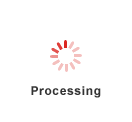
As the leading ship supplier in Australian Antarctic Territory, Marine Omega Systems, we specialize in delivering high-quality Propeller Efficiency Analysis with unmatched speed and reliability. Trusted by shipowners and masters worldwide, our team ensures your vessel gets everything it needs — on time, every time.
Propeller Efficiency Analysis evaluates the aerodynamic performance of propellers by assessing thrust, power, and efficiency under various operating conditions. Propeller Performance Optimization focuses on improving design parameters like blade shape, pitch, and material to maximize thrust and minimize energy losses. Both processes utilize computational simulations, wind tunnel testing, and real-world data to enhance propeller effectiveness for specific applications.
Propeller Efficiency Analysis and Performance Optimization typically involve the following key specifications and technical properties:
Size: Diameter (ranging from 0.5m to 10m+), blade area ratio, pitch-to-diameter ratio.
Grade: Material grades such as aluminum (e.g., 6061-T6), stainless steel (e.g., 316), bronze (e.g., NiAl bronze), or composites (e.g., carbon fiber).
Viscosity: Fluid viscosity (e.g., seawater ~1.05 mPa·s, freshwater ~1.0 mPa·s) affecting hydrodynamic performance.
Buoyancy: Displacement and buoyant force calculations based on propeller immersion depth and fluid density.
Material: Common materials include aluminum alloys, stainless steel, bronze, titanium, or reinforced polymers for corrosion resistance and strength.
Additional Properties: Blade count (3-6 blades), rotational speed (RPM), thrust coefficient (Kt), torque coefficient (Kq), and cavitation resistance.
Send your enquiry for prompt assistance to supply@shipfeeds.com
Greetings, Captain! We’re actively monitoring this form!
Submitting here ensures the instant response from our team.
Create Ship Supply Enquiry By WhatsApp X